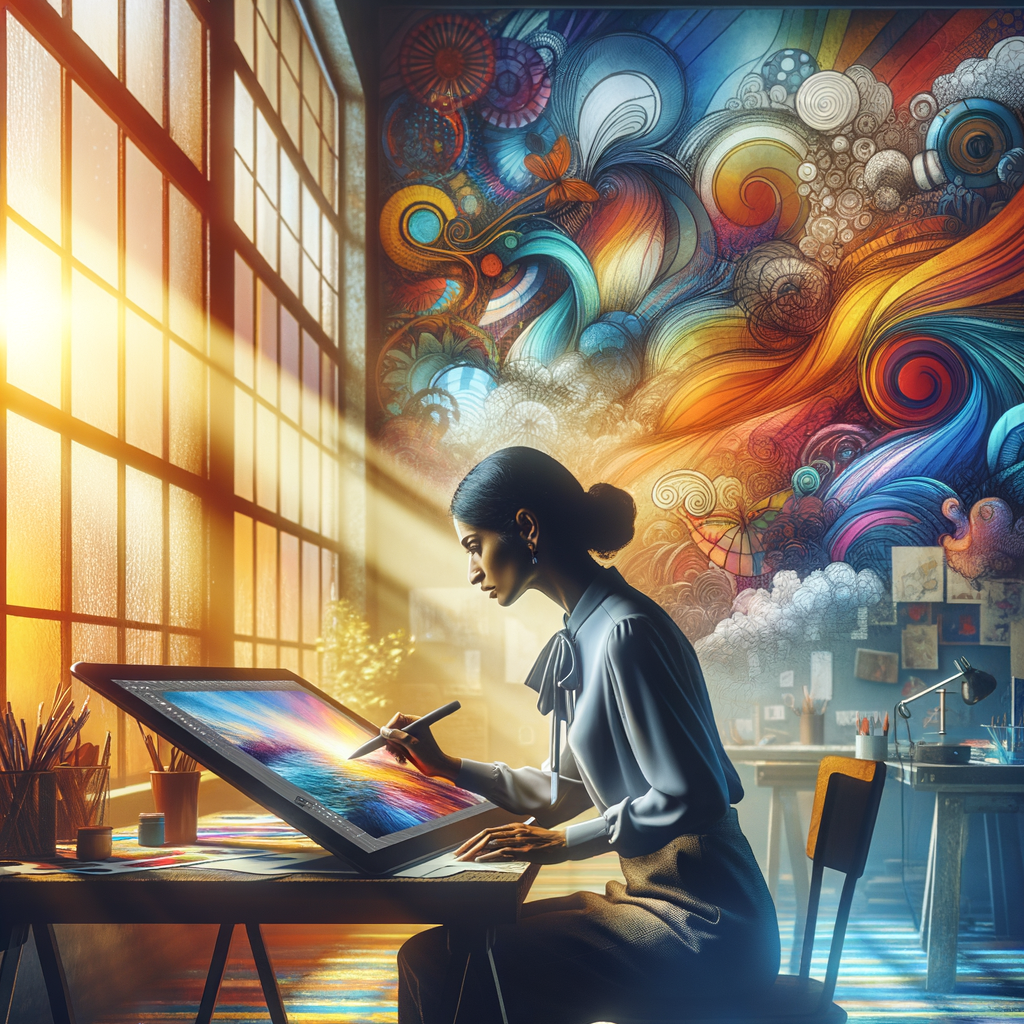
Color theory is a fundamental aspect of creating visually appealing artwork. For digital artists, understanding how to mix and manipulate colors can dramatically enhance the quality of your creations. In this comprehensive guide, we will delve into the core principles of color theory and provide practical tips on applying these concepts to your digital artworks. Whether you are a beginner looking to improve your skills or an experienced artist seeking to refine your color techniques, this article will offer valuable insights and resources to elevate your artistry.
Color is one of the most powerful tools in an artist's arsenal. It can influence emotion, create atmosphere, and bring life to your work. However, the challenge of mastering color theory can seem daunting at first. In this article, we will break down the components of color theory into manageable concepts that you can easily integrate into your digital practice.
Color theory is an area of study that encompasses the relationships between colors, how they interact with one another, and the psychological effects they can have on viewers. By understanding color theory, you can make informed decisions about your color choices, leading to more cohesive and compelling artwork.
Understanding the Color Wheel
The color wheel is a visual representation of colors arranged according to their relationships. The classic color wheel consists of primary, secondary, and tertiary colors:
- Primary Colors: Red, Blue, and Yellow – These colors cannot be created by mixing other colors.
- Secondary Colors: Green, Orange, and Purple – These are formed by mixing two primary colors.
- Tertiary Colors: These are created by mixing a primary color with a secondary color, leading to hues like Red-Orange and Blue-Green.
Understanding the relationships between these colors is key to developing a strong foundational knowledge of how to use color effectively.
Color Harmony and Schemes
Color harmony refers to the aesthetically pleasing arrangement of colors in a composition. There are several common color schemes that can help achieve harmony:
- Monochromatic: Uses variations in lightness and saturation of a single color.
- Analogous: Combines colors that are next to each other on the color wheel.
- Complementary: Pairs colors that are opposite each other on the color wheel for high contrast.
- Triadic: Uses three colors that are evenly spaced around the color wheel.
Each of these schemes can evoke different feelings and atmospheres, making them valuable tools in your artistic toolkit.
The Psychological Effects of Color
Colors can inspire different feelings and associations. For instance:
- Red: Often evokes feelings of passion or anger.
- Blue: Can instill calmness and tranquility.
- Yellow: Represents happiness and energy.
By choosing colors that convey the desired emotion in your artwork, you can effectively communicate your message to your audience.
Creating Color Palettes
Once you understand color theory, the next step is creating effective color palettes for your digital artwork. Here are some tips:
- **Use Color Pickers:** Software like Adobe Photoshop and Procreate have built-in color pickers that allow you to experiment with colors easily.
- **Explore Color Palette Generators:** Websites like Coolors and Adobe Color can help you generate harmonious color schemes based on different color theory principles.
- **Save Your Palettes:** Keep a library of color palettes that you love and refer back to them for consistency and inspiration.
By creating a library of favorite color palettes, you can streamline your workflow and focus more on the artistic side of your projects.
Practical Exercises to Improve Your Color Skills
Here are some practical exercises to help you utilize and expand your understanding of color theory:
- **Flat Color Drawings:** Start by creating simple drawings using flat colors. This helps you focus on your color choices without being distracted by details.
- **Recreate Existing Palettes:** Choose artworks you admire and try to recreate their color palettes. This exercise allows you to analyze why the colors work well together.
- **Experiment in Black and White:** Practice creating compositions in black and white to understand the importance of value. Once you grasp this, apply colors to your grayscale artworks.
Engaging with these exercises regularly will help solidify your grasp of color theory and improve your artwork over time.
Conclusion
Mastering color theory is an ongoing journey for any artist, especially in the digital realm. By understanding the fundamentals of color relationships, harmony, and psychological effects, you can make informed decisions that enhance your artistic expression. Remember to practice and experiment consistently, and consider color theory as a creative tool that enables you to convey specific emotions and messages through your artwork.
As you develop your skills, don’t hesitate to explore new color palettes and techniques. Embrace the creative process and allow your own unique style to flourish. The world of digital art is at your fingertips, and understanding color is the first step towards creating stunning, impactful works.

